Austin, TX |
Forklift Danceworks & Parks & Recreation Department’s Aquatics Division
.jpg)
Photo: Jonica Moore
Photo: Leon Alesi
Photo: Alex Masi
Photo: Jonica Moore
Photo: Lynn Lane
Photo: Jonica Moore
Photo: Jonica Moore
Photo: Jonica Moore
Photo: Eric Morales
Austin-based Forklift Danceworks activates communities through a collaborative creative process. Forklift’s performances are typically large-scale, site-specific civic spectacles that create deeper understandings of the jobs essential to urban life, more informed civic dialogue, and greater connection between citizens and across communities. My Park, My Pool, My City is a three-year artistic residency in partnership with the Austin’s Parks and Recreation Aquatics Division which began in 2017, activating and amplifying civic engagement around the future of Austin’s city pools. It was conceived of after a successful collaboration between Forklift and Austin’s Urban Forestry Program.
From 2015-17, Forklift Co-Directors Alison Orr and Krissie Marty participated in conversations and planning meetings with the Director and staff of the Parks & Recreation Department and neighborhood leaders. They came to more fully understand the importance of pools as public gathering spaces and the challenges Austin’s pools face. Austin’s 45 aquatics facilities are on average 50 years old, and many need more repairs than the city can afford. Conditions are particularly acute in the historically marginalized neighborhoods of East Austin.
As these neighborhoods expand and their demographics shift, My Park, My Pool, My City is, in part, an opportunity to celebrate and maintain the vibrant histories of these communities, and to bring Austinites together at the pool. For each of the three years, My Park, My Pool, My City centered on a different East Austin pool, creating summer performances in collaboration with aquatics maintenance staff, lifeguards, and neighborhood residents. Forklift also hosted and participated in community meetings and pool parties leading up to and following each show. The Aquatics Division provided access to city facilities, paid performing employees for their time, and informed the issues the project addresses. Through a process of deep listening and collaborative creation, Forklift artists invited staff and pool users to share their stories, and invited audiences to bear witness to the people whose labor supports life in Austin.
For more, see these videos of the performances: Bartholomew Swims, Dove Spring Swims, and Givens Swim.
Blacksburg, VA |
New River Valley Regional Commission & Department of Theater and Cinema, Virginia Tech with local artists
public.imaginingamerica.org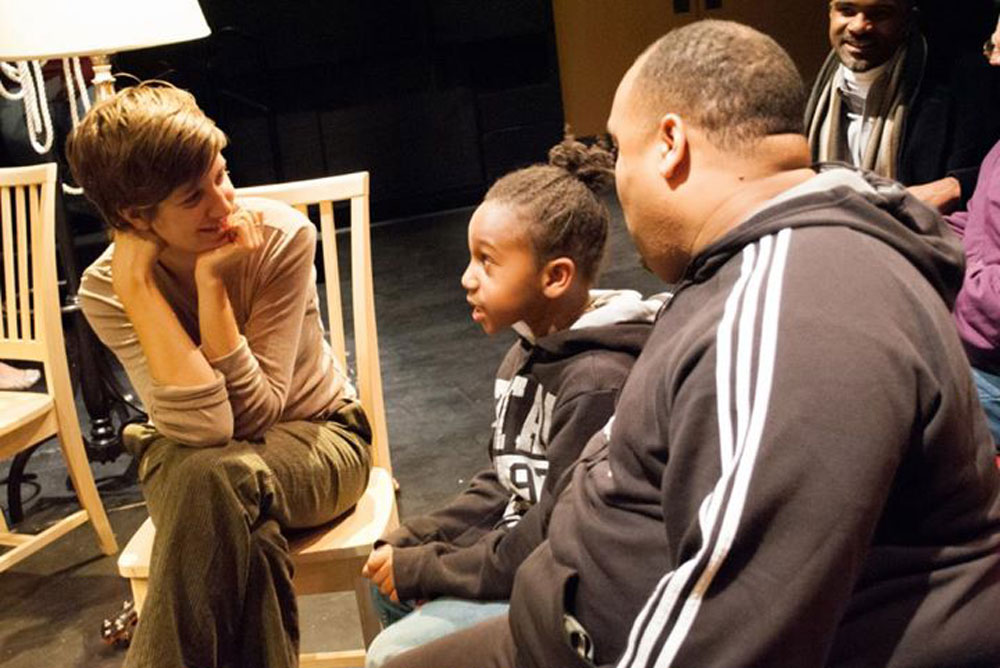
Actor Anna Roberts-Gevalt engages with audience members during a performance based on the town meetings. Photo: Bryanna Demerly
Members of a local NAACP chapter play a board game on the planning process, during a Building Home workshop. Photo: Kevin Byrd, NRV Regional Commission
In 2010, the New River Valley Regional Commission, an independent planning agency in southwestern Virginia funded by local governments in combination with state and federal moneys, partnered with university theater professor Robert Leonard and some of his students from the Department of Theatre and Cinema at Virginia Tech in Blacksburg, VA. The goal was to use the arts to increase and diversify public participation in developing a comprehensive regional plan. The plan was intended to address all essential elements of the community--housing, jobs, infrastructure, transportation, etc. Working with community artists, actors, and musicians as well, Leonard and his students used storytelling and theater-making techniques to facilitate and stimulate public conversation about the future of their communities in the New River Valley. These included Story Circle techniques, group sings, and Augusto Boal’s Image and Forum Theater.
Leonard writes this about the project:
“In the four weeks since the [first] storytelling session, those most resistant experienced a profound turn around, realizing they had made unvarnished statements, expressed passionately held values, and recognized important realities that they thought they would never reveal in public. They praised the experience because they could see the complexities of the situation through hearing different perspectives and needs. They recognized that sharing and hearing these perspectives contributed to an essential public conversation. [This experience was in sync with] a comment [I later heard] by [theater maker] Brent Blair, that art-making in public provides "a container for complexity" that is rare and vital for healthy civic discourse.”
The artists’ innovative use of performance and storytelling facilitated community engagement with participatory democracy and civic practice. By telling and hearing stories of local places they valued, residents felt able to participate and also got to know one another better. The agency had the means to bring some of the ideas from these conversations into planning decisions to everyone’s benefit.
Boston, MA |
Mayor’s Office of Arts and Culture, various city agencies & local artists
boston.gov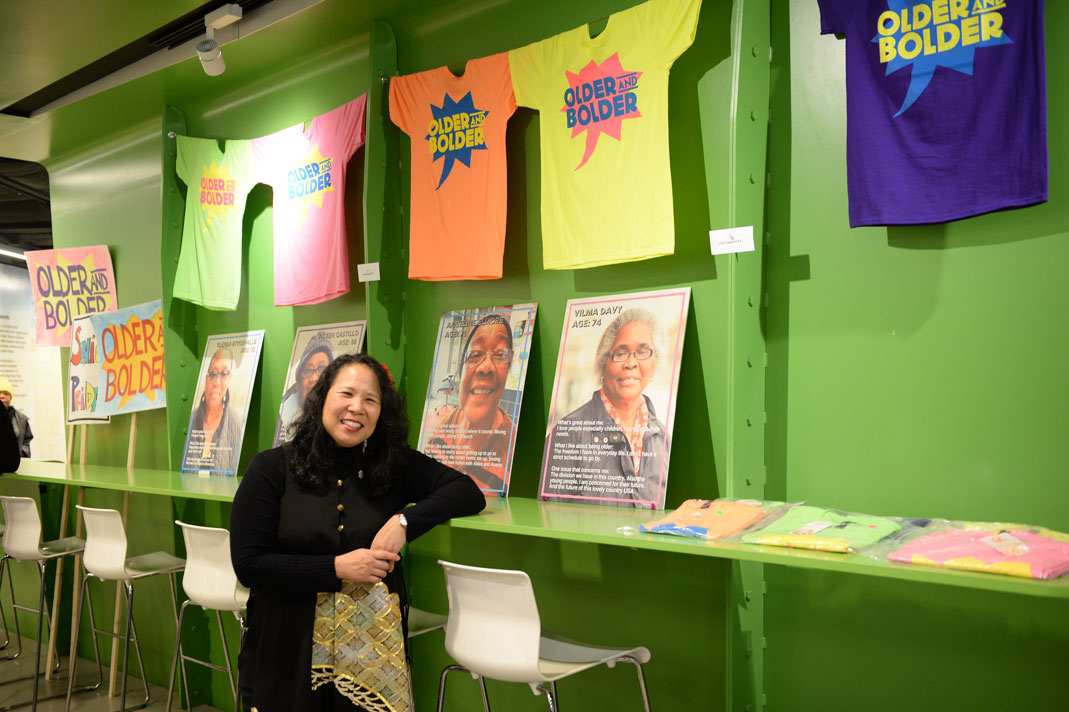
Artist Karen Young and artwork for her project Older and Bolder at the Boston AIR showcase, 2018. Photo: Ryan McMahon.
The Oral History Phone Booth, part of Daniel Johnson's project We Are Boston: Stories of Hope, Struggle, and Resilience, at the Boston AIR showcase, 2018. Photo: Ryan McMahon
AIR Nakia Hill leading a writing workshop. Photo: City of Boston
Karen Young performing with Older and Bolder at National Night Out in Dorchester. Photo: City of Boston.
Steve Locke's Love Letter to a Library, at Central Branch of Boston Public Library. Photo: City of Boston
Nakia Hill leading a writing workshop with senior women, whose stories were featured in her intergenerational anthology I Still Did It: Stories of Resilience. Photo: City of Boston
The Boston Artists-in-Residence Program (Boston AIR) began in 2015, and was developed alongside the the City’s ten-year cultural strategic plan, Boston Creates. The AIR program positions social practice as an important part of government work and community engagement. Artists can help the city approach challenges in new ways, and lift up voices that are less often heard. The program aims to provide communities with more pathways to become active in shaping and understanding the policies that influence them.
Artists work with specific departments, neighborhoods, and/or within city programs such as after-school programs. As of 2019, 20 artists have participated. The AIR program uses a cohort model, in which multiple artists are working in the same year, and also convene for workshops, lectures, and to learn from each other. Cohorts may work with themes—for example the seven 2018 AIR projects were framed through a lens of Resilience and Racial Equity. For the first four months, the artists researched related City policies and practices such as climate change and aging. They then spent a year collaborating with community members and City officials on art projects that reframed public conversations around the issues. You can see some examples of the AIR cohort’s work in this video.
Boston, MA |
MAPC, various planning agencies & artists
mapc.org
MAPC Artist in Residence Carolyn Lewenberg designed the bench for the Everett Earthworks Sculptural Garden. This community space also features mural panels by local high school students. Photo: MAPC
MAPC Artist-in-Residence Carolyn Lewenberg developed creative strategies for bringing people into a launch event for a cultural economic development strategy in the town of Wakefield, MA. This included making chalk sidewalk drawings with high school students. Photo: MAPC
MAPC Artist-in-Residence Carolyn Lewenberg designed an artmaking station modeled after a shoe-shine cart. Participants in Rockland, MA were invited to share places they valued most, and contribute a watercolor shoeprint to a community-wide public art project. Photo: MAPC
MAPC Artist-in-Residence Carolyn Lewenberg worked with Principal Land Use Planner Carlos Montanez on community engagement around the Everett Open Space and Recreation Plan. This included creating viewmasters for a local event to invite people to share their visual preferences. Photo: Renato Castelo
The Metropolitan Area Planning Council (MAPC) is the regional planning agency serving residents and workers in the 101 cities and towns within the Metropolitan Boston area. The Artist in Residence program is part of MAPC’s Arts, Culture, and Planning Initiative, which is meant to bring arts, culture, and creativity into the agency’s multidisciplinary planning work with cities, towns, and local organizations.
MAPC’s first artist-in-residence, Carolyn Lewenberg, worked with 10 MAPC planners in departments including Land Use, Public Health, Environment, Government Affairs, and Strategic Initiatives. She contributed to 11 different projects by designing and carrying out arts engagement activities, curating other artists into programming, creating a public artwork, giving and moderating presentations, assisting with public relations materials, and other projects. She also participated in project development and planning, staff meetings, and time for reflection. She notes that this work was shaped by conversations with planners, MAPC staff, and community partners rather than a studio-based exploration of materials or community-based conversations. You can read more about her thoughts here.
Detroit, MI |
City of Detroit & Aaron K. Foley
theneighborhoods.org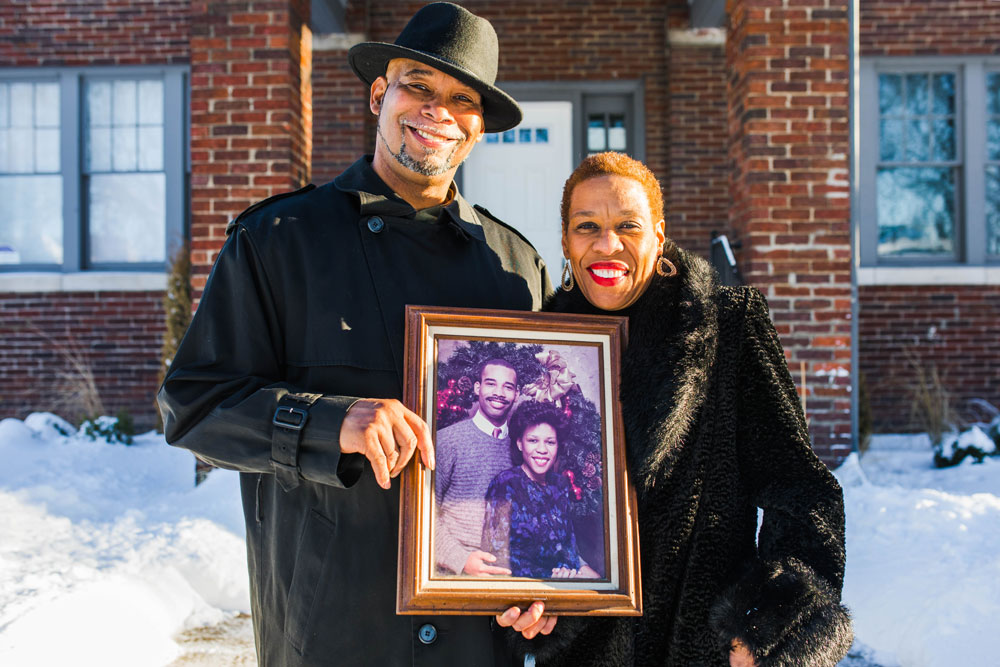
Residents and organizations featured on The Neighborhoods Initiative’s website and public access channel. Photos: Cyrus Tetteh/City of Detroit.
Residents and organizations featured on The Neighborhoods Initiative’s website and public access channel. Photos: Cyrus Tetteh/City of Detroit.
Residents and organizations featured on The Neighborhoods Initiative’s website and public access channel. Photos: Cyrus Tetteh/City of Detroit.
Residents and organizations featured on The Neighborhoods Initiative’s website and public access channel. Photos: Cyrus Tetteh/City of Detroit.
Residents and organizations featured on The Neighborhoods Initiative’s website and public access channel. Photos: Cyrus Tetteh/City of Detroit.
Residents and organizations featured on The Neighborhoods Initiative’s website and public access channel. Photos: Cyrus Tetteh/City of Detroit.
Residents and organizations featured on The Neighborhoods Initiative’s website and public access channel. Photos: Cyrus Tetteh/City of Detroit.
Detroit Mayor Mike Duggan created the Chief Storyteller position because he wanted to “remodel the narrative” of a city that suffers from persistent negative mainstream media portrayals. Detroit is 83% African-American but many black residents feel left out of media coverage. The Mayor chose journalist Aaron Foley as Chief Storyteller to bring balance to how Detroit is portrayed, and to highlight positive stories centered in communities of color. Foley is a full-time employee of the City, and reports to the Mayor’s Chief of Staff. However the Chief Storyteller intentionally works independently from the Mayor’s Office, in order to create a new narrative of self-determination for the city.
Foley hired a small team of journalists and videographers that work independently from the city, to create media pieces for The Neighborhoods website and local cable news channel. There are currently over 200 stories on the site, fulfilling the intent to present a more diverse and nuanced portrait of Detroit and its people than is available through the popular media. The website also includes events and happenings, resources for families, information about block clubs, neighborhood organizations and volunteer opportunities, and information about the people and businesses that make Detroit home.
Los Angeles, CA |
City of Los Angeles Department of Cultural Affairs, Department of Transportation & local artists
Los Angeles Department of Transportation Creative Catalyst Artist in Residence, Vision Zero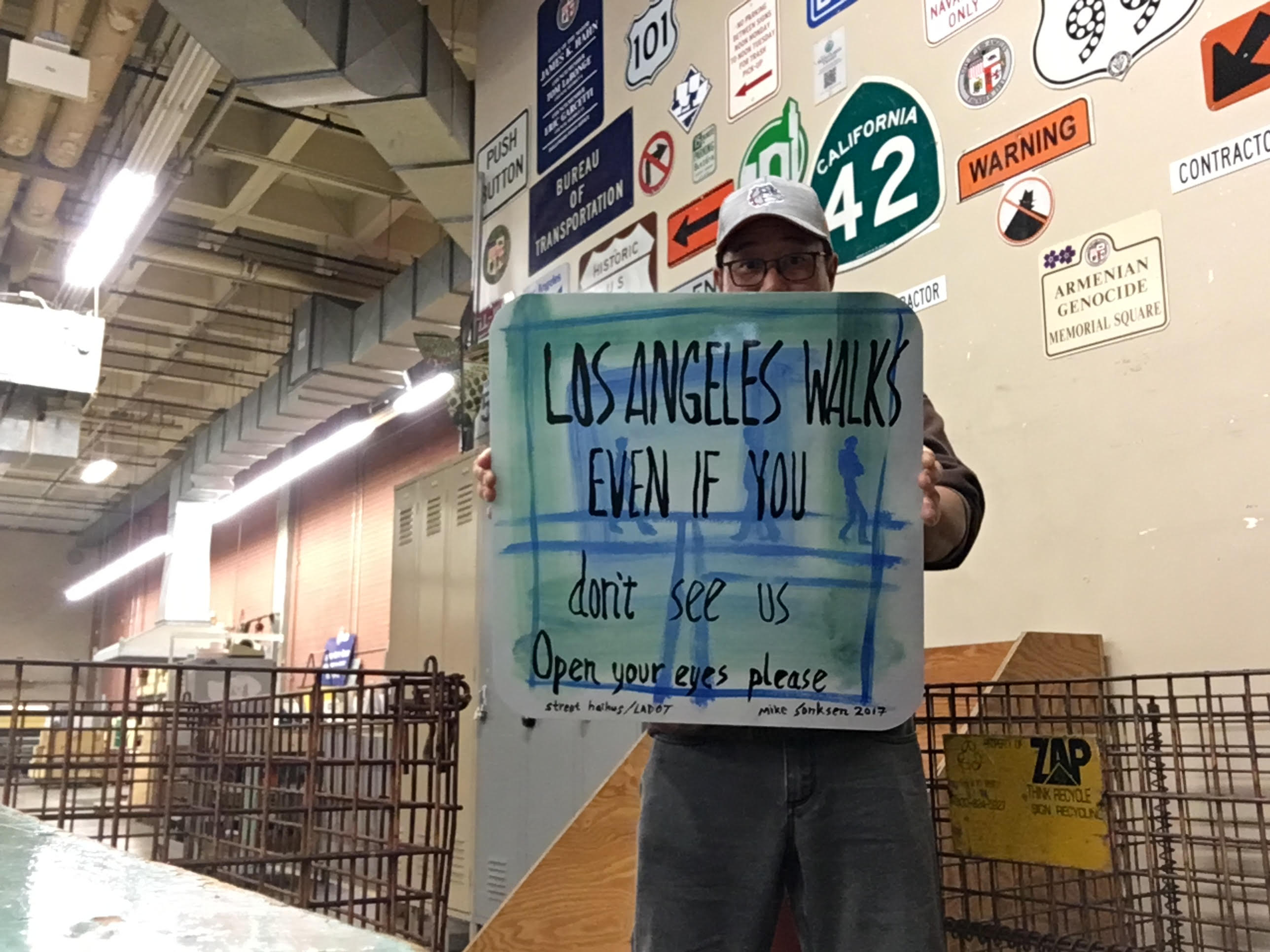
Creative Catalyst is a collaboration between the City of Los Angeles’ Department of Transportation (DOT) and Department of Cultural Affairs (DCA). This program is part of Vision Zero, a City initiative to reduce or eliminate traffic fatalities by 2025. The program invites an experienced cultural producer such as an artist or curator to be in residence at DOT. The artist, who is contracted for two one-year periods as a part-time staff member, is selected with a focus on their ability to bring new ideas to departmental goals, develop and carry out projects; and make inroads in changing internal DOT culture and external policies. DOT hopes to “shift public perception, attitudes, and behaviors towards our transportation system.”
The first Creative Catalyst, sound artist Alan Nakagawa, felt that DOT was missing “a sense of narrative. Many of the staff felt the same way. Specifically, at that time, the Vision Zero team was basing its direction, primarily on traffic data, which makes total sense from an engineering standpoint but if we were going to change the hearts and minds of the City, then the stories behind the number needed to rise to the surface as well.” With the support of DOT, Nakagawa interviewed current and retired staff and crafted a podcast, a zine, a ghost bike project, and public installations. His work helped to surface the human story of Los Angeles transportation.
Los Angeles, CA |
Los Angeles County Department of Arts and Culture & various artists
lacountyarts.org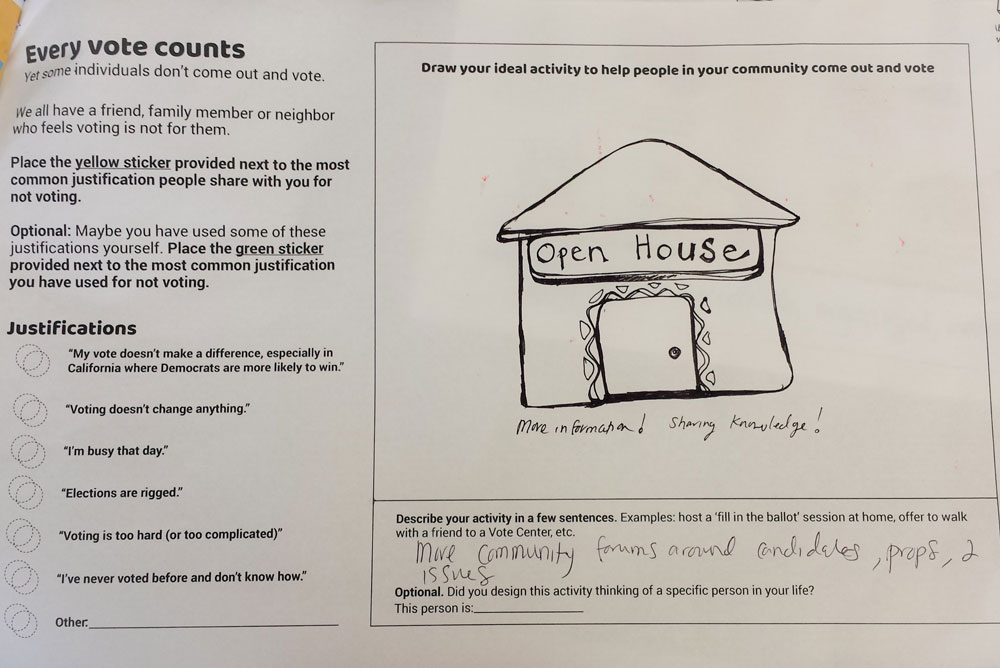
Created by the LA County Board of Supervisors in 2017, the Creative Strategist program embeds artists who represent diverse communities in year-long, paid positions within county departments. The goal of the program is to develop and implement artist-driven solutions to civic challenges, and in the process improve how participating county agencies do their work.
The artist works alongside staff, project partners, community stakeholders, and other artists in a collaborative process to strategize, promote, implement, document and evaluate artist-driven solutions. Participating county departments include Mental Health, Parks and Recreation, Public Health, Library, and Registrar-Recorder.
This program is part of the County’s Cultural Equity and Inclusion Initiative, a plan designed to ensure that everyone has equitable access to arts and culture.
See the Evaluation in Action profile to read about LA County Department of Arts and Culture’s Creative Graffiti Abatement Project.
Minneapolis, MN |
Office of Arts, Culture, and the Creative Economy; other City departments & local artists
minneapolismn.gov/coordinator/arts/index.htm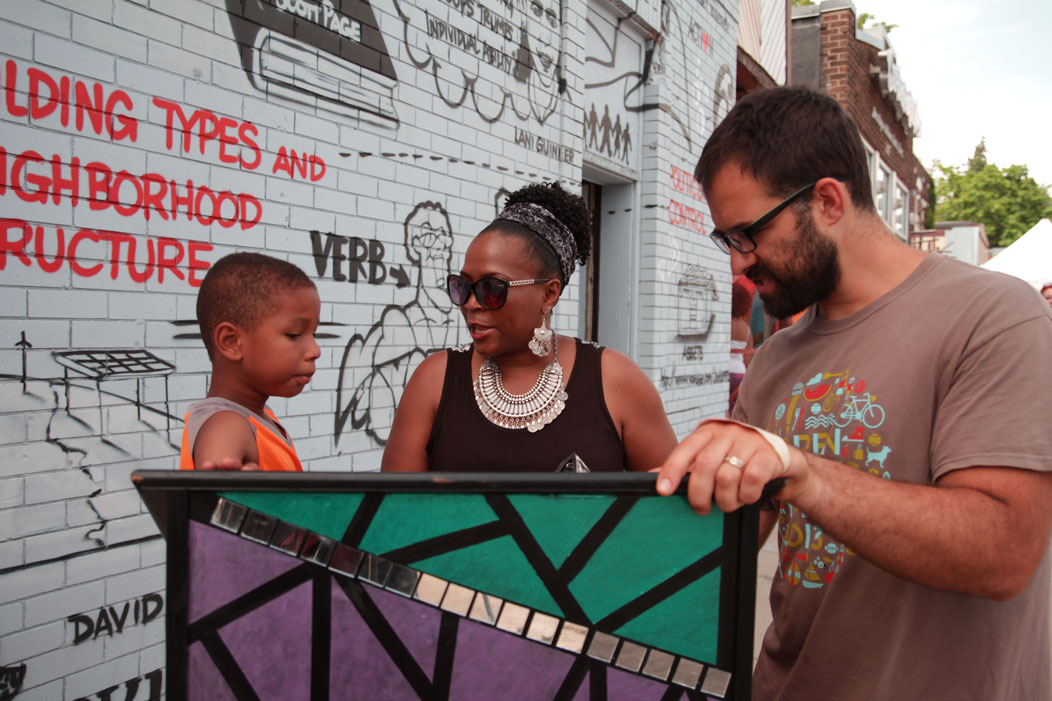
The Equity Pulpit, part of a project by D.A. Bullock and Ariah Fine, in collaboration with the Neighborhood and Community Relations Department. Photo: Alizarin Meninnga, Office of Arts, Culture, and the Creative Economy, City of Minneapolis
Part of a creative asset mapping of the Cedar-Riverside neighborhood by artists E.G. Bailey and Shá Cage. Photo: Justin Sengly, Office of Arts, Culture, and the Creative Economy, City of Minneapolis
Part of a creative asset mapping of the Cedar-Riverside neighborhood by artists E.G. Bailey and Shá Cage. Photo: Justin Sengly, Office of Arts, Culture, and the Creative Economy, City of Minneapolis
Tenants participating in a “Hearing Tenant Voices” workshop with artists Mankwe Ndosi and Reggie Prim, in collaboration with the Regulatory Services Department. Photo: Rebecca Crisanta de Ybarra, Office of Arts, Culture, and the Creative Economy, City of Minneapolis
Housing inspectors participating in a “Hearing Tenant Voices” workshop with artists Mankwe Ndosi and Reggie Prim, in collaboration with the Regulatory Services Department. Photo: Rebecca Crisanta de Ybarra, Office of Arts, Culture, and the Creative Economy, City of Minneapolis
Minneapolis’ Office of Arts, Culture, and the Creative Economy (ACCE) leads the Creative CityMaking (CCM) program since 2013. CCM advances the City’s goal of improving economic and racial disparities through systems change, and by creating better engagement and services for communities. CCM places experienced community artists into collaboration with staff in City departments which have included Community Planning and Economic Development, Regulatory Services, Information Technology, Neighborhood and Community Relations, City Clerk’s Office, Public Works, and the Office of Sustainability. Projects have focused both on internal concerns, such as transforming agency culture, and on agency work within communities.
CCM is grounded in ideas of equity. Teams have participated in dialogue that included deep personal reflection and often emotional conversations about the City’s and departments’ historical and current patterns of inequity. They have worked to understand the specific contexts of the department and the community that they engage. Artists have been particularly adept at identifying disconnects between the departments’ intentions for community engagement, and the reality of their practices. These conversations, though difficult at times, created a space for both team and project growth.
Three structural aspects of CCM were key to its continued success:
Nashville, TN |
Metro Arts, Juvenile Court, Oasis Center & local artists
metroartsnashville.com/opportunity-now-arts-experiences
Youth participating in the African American Cultural Alliance’s “Reach for the Stars” program gather at Slim + Husky’s Pizza. Photo: Metro Arts
Youth identified as at-risk by Gang Court create art about Nashville. Photo: Metro Arts
Teens identify with scenarios in actor-director Jon Royal’s “August Wilson Gets Real” program. Photo: Metro Arts
Court-involved youth paint with Gideon’s Army at Pearl Cohn High School. Photo: Metro Arts
The Restorative Arts program is a partnership between Nashville’s Office of Arts and Culture (Metro Arts), the Juvenile Court, and the Oasis Center to create an arts-based intervention system for court-involved youth. Research shows that youth engagement with the arts results in more investment in education, greater community engagement, and better self esteem and social skills. The program provides arts workshops, performances, and other arts experiences for youth in juvenile detention, and for families and youth who are otherwise court-involved.
Metro Arts and the Oasis Center trains teaching artists and partner organization staff in restorative practices, understanding systemic racism, trauma-informed care, positive youth development, non-violent communication and storytelling. This equips artists to be effective front-line service providers for youth. Teaching artists introduce participants to art forms including spoken word, storytelling, theater, creative writing, beat making, music production, dance, visual art, yoga, and drumming.
Restorative Arts is intentional in its commitment to equity because social, structural, and systemic inequities are at the core of trauma experienced by many young people who end up in the juvenile justice system. Before creating the program, Metro Arts staff worked to understand the oppressive structures that exist in its own agency work, in the systems in which it interacts, and in its partnership with Juvenile Justice Center. Only by analyzing inequity, could it devise the program that could help break down barriers.
Philadelphia, PA |
Mural Arts Philadelphia, Department of Behavioral Health and Intellectual disAbility Services, & local artists
muralarts.org/program/porch-light/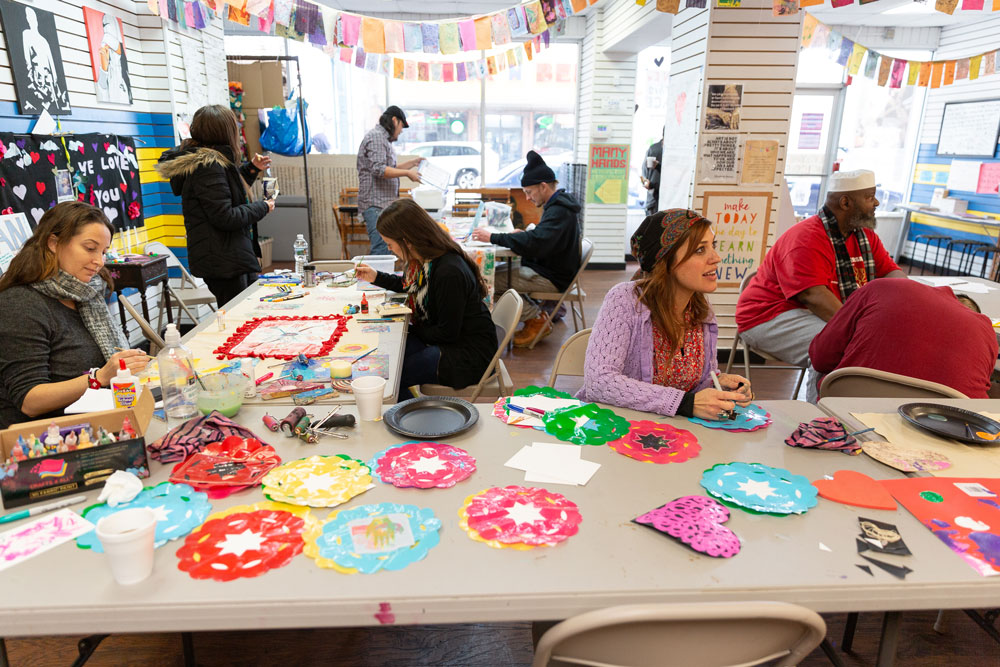
Patches and Prayer Flags workshop at Kensington Storefront. Photo: Steve Weinik, 2019
Painting a Healthy City workshop. Photo: Clayton Wolfe, 2019
Painting a Healthy City workshop. Photo: Clayton Wolfe, 2019
Tea and Textiles workshop, Kensington Storefront. Photo: Steve Weinik, 2019
The Porch Light program is a collaboration between non-profit Mural Arts Philadelphia and the City of Philadelphia’s Department of Behavioral Health and Intellectual disAbility Services. It is a dedicated program at Mural Arts with its own staff and outreach strategy. The program revolves around a community-created mural that illustrate themes around wellness and mental and behavioural health issues. These include issues that have had visible effects on the community, such as mental health, substance use, spirituality, homelessness, trauma, immigration, war, and neighborhood safety. Porch Light programs occur in lower-income communities in which transforming a public space will have a significant impact.
Each mural is created during a months-long program in partnership with a neighborhood public health organization and local artists. The partner organization hosts the project at a community site, and Porch Light works with staff (such as therapists) to refer clients to the program. Mural projects start with weekly artist-led creative workshops and dialogues about health for a core group of participants. Monthly open studios invite the entire community in. The lead artist creates a mural image from the output of the workshops, and the larger community helps to paint it during “Community Paint Days.”
Porch Light’s work promotes both community resiliency and recovery and public health. Their goals for the program include to: increase awareness about mental health; promote social inclusion; increase access to mental health resources; and develop cognitive skills related to art-making (i.e. abstract thinking, problem-solving, esteem-building). Outcomes include improving the physical environment, new opportunities for social connections, and greater understanding between neighbors.
Saint Paul, MN |
Public Art Saint Paul, City of Saint Paul & local artists
publicartstpaul.org/cityartist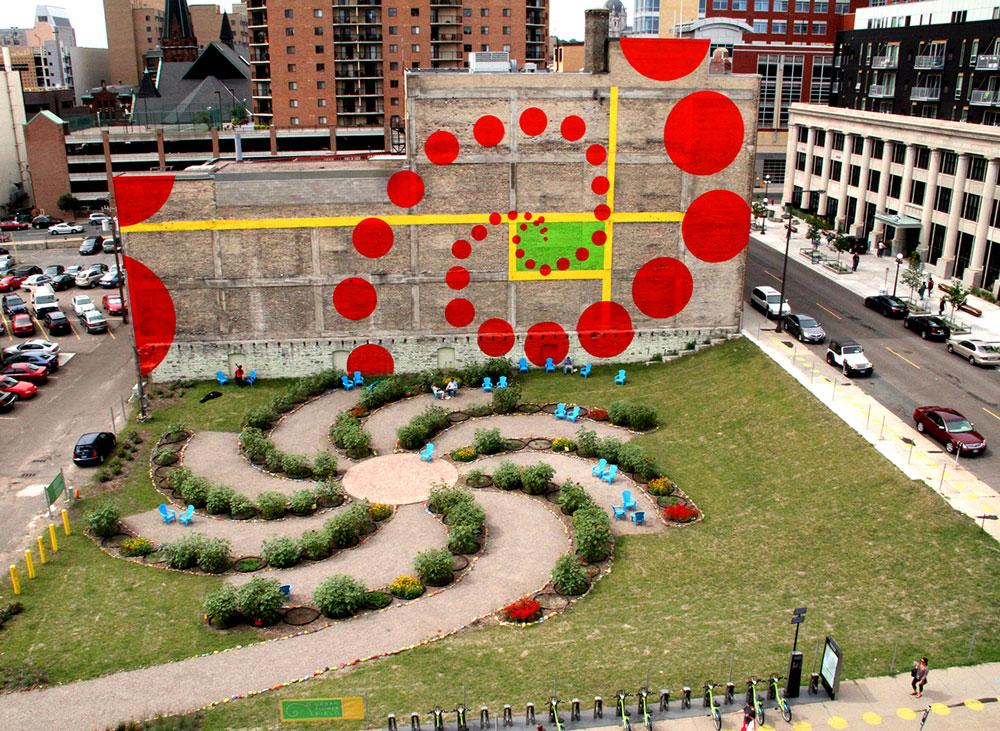
Amanda Lovelee’s Urban Flower Field transformed a vacant lot with a spiral plot of flowers that remove contaminants from the soil.
Christine Baeumler’s project Bee Real Bee Everywhere created “high rise” sculptural homes for bees; and gives out pollinator seeds and education at local parks.
Christine Baeumler’s project Bee Real Bee Everywhere created “high rise” sculptural homes for bees; and gives out pollinator seeds and education at local parks.Credit: Carrie Thompson
Amanda Lovelee’s Pop-up Meeting offers popsicles in exchange for thoughts and feedback about the City. Photo: Colleen Sheehy
Amanda Lovelee’s Pop-up Meeting offers popsicles in exchange for thoughts and feedback about the City.
Created in 2005, the City Artist integrates artists into the daily and long-term workings of the city. Program goals are to shape public spaces, improve city systems, and deepen civic engagement. Artists advise on major city initiatives and lead their own artistic and curatorial projects.
City Artist is a partnership between the City of Saint Paul and non-profit organization Public Art Saint Paul (PASP), which oversees public art programs for the city. Artists are part-time employees of PASP, and receive health and retirement benefits. This also allows for a more open-ended tenure for the artist rather than one that is restricted by the City’s time-limited contracts. This has proven valuable in terms of artists having extended time to build relationships, gain understanding of department opportunities and systems, and to develop projects with sufficient time to ensure impact.
Artists are embedded in City Hall and have dedicated work space within the Department of Public Works. In this way they can collaborate across city agencies. In addition to their own creative work, they advise on everything from city initiatives, planning studies, and capital project design, to ongoing street and sidewalk maintenance. Projects have included poetry stamped into concrete sidewalks, a vacant lot transformed by spiraling plots of flowers, and a civic choir.
Seattle, WA |
Office of Arts and Culture, Office of Civil Rights, & local artists
seattle.gov/arts/programs/racial-equity
Actors performing The Shape of Trust. From L to R: Ayo Tushinde, Aishé Keita, Nina Williams Teramachi, Monique Aldred, Tricia Castañeda-Gonzales, Anasofia Gallegos, Christi Cruz. Photo: Zorn Taylor.
Tyson Simmons of the Muckleshoot Tribe demonstrating traditional arts during the Muckleshoot TEK (Traditional Ecological Knowledge) Expo. Photo: Zorn Taylor
A traditional herbal medicine created with members of the Muckleshoot tribe during the Muckleshoot TEK Expo. Photo: Zorn Taylor
In alignment with the City's Race and Social Justice Initiative, Seattle’s Office of Arts and Culture partners with the Office for Civil Rights in using the arts as a strategy to move toward racial equity and social justice within City agencies and across the City as a whole.
The Creative Strategies Initiative (CSI) is central to this work. CSI aims to shift government culture by using the arts to build racial equity in non-arts areas like the environment, housing, workforce and community development. One project, The Shape of Trust, began as a theater piece created from City employees' stories of racial harassment, discrimination, and institutional racism. CSI is using the piece as a base for building training curricula and coaching materials for city supervisors and managers about racial equity. Another project involved artist-in-residence Carina Del Rosario working with the City’s Environmental Justice Committee and leaders of the Muckleshoot Tribe to create an event for local government policy makers that includes cooking and eating Indigenous foods and creating a model for a policy on foraging.
Diana Falchuk, who leads the partnership between the Offices of Arts & Culture and Civil Rights, writes that in order to fight the injustices of white supremacy “...we must use art and humor to tell our own stories, ones of justice that wage love; and that local government has a role to play in our overall culture shift by transforming itself with the guidance of artists and grounding in creativity.”
Richmond, VA |
Art 180, Mark Strandquist & Richmond Police Department
performingstatistics.orgPerforming Statistics was initiated in 2014 by artist/activist Mark Strandquist and Trey Hartt of Art 180, a non-profit organization that provides art programs for youth “living in challenging circumstances,” in collaboration with the Legal Aid Justice Center. In 2019 Performing Statistics became an independent non-profit.
Performing Statistics is a youth-centered cultural organizing project. It works with youth who are incarcerated or otherwise involved with the juvenile justice system to use creative expression as a way to reimagine the system. Key goals are to reduce police interactions and arrests, and to work towards police-free schools. Some of the many projects created by youth over the past five years include art works such as self-portraits and protest posters; radio spots featuring the voices of incarcerated youth; a justice parade; a number of exhibitions; and an educator curriculum.
The Performing Statistics team used these art projects to create a training workshop for Richmond Police officers, in collaboration with former Chief of Police Alfred Durham. The training includes activities that promote empathy building, trauma-informed approaches, family perspectives, and ideas for how police officers can reduce negative interactions with youth and disrupt the school-to-prison pipeline. The training was given to new recruits, seasoned police officers, and school resource officers. Due to its success, it is now required for all 700 officers in the Richmond police force. See this blog post for a description of one training.
Some of the structural factors at the heart of this partnership include:
“Reaching the personal level has built the structural relationship for the project. If it wasn’t for our Police Chief coming to our exhibition and being moved by the words of the youth, then spending time [after] time talking with him, we wouldn’t be training police.” Trey Hartt, Project Director
© A Blade of Grass